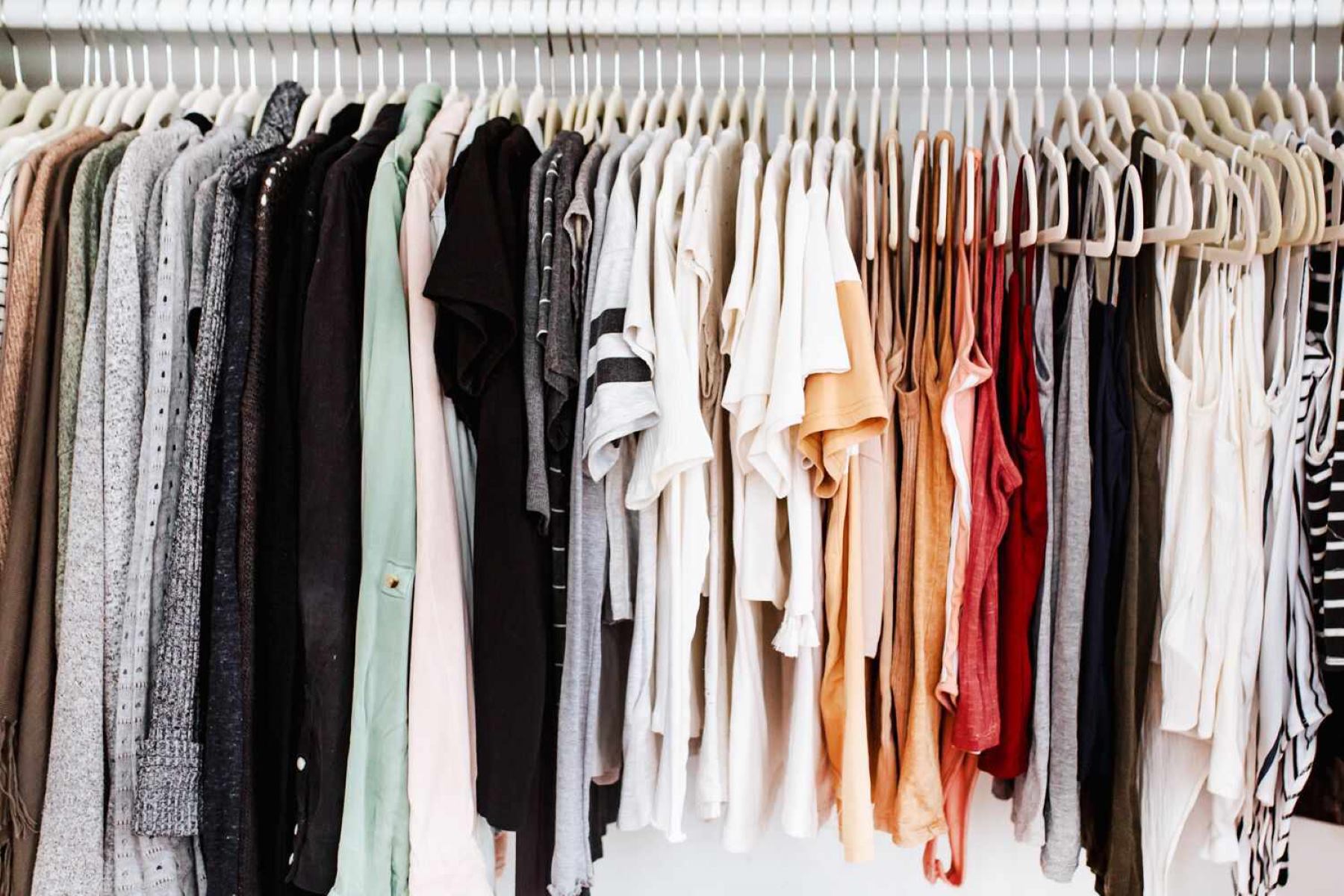

Articles
How To Store Shirts In Closet
Modified: January 19, 2024
Learn how to store articles in your closet efficiently and keep your shirts organized. Find helpful tips and tricks to maximize your closet space and prevent wrinkles.
(Many of the links in this article redirect to a specific reviewed product. Your purchase of these products through affiliate links helps to generate commission for Storables.com, at no extra cost. Learn more)
Introduction
Welcome to the ultimate guide on how to store shirts in your closet. Your closet is a place where you keep your clothes organized and accessible, and proper shirt storage plays a crucial role in maintaining their quality and longevity. Whether you have a collection of button-down shirts, t-shirts, or delicate fabrics, a well-organized closet can make all the difference in keeping your shirts looking their best.
In this article, we will explore various methods and tips for storing your shirts in a way that maximizes space, prevents wrinkles, and allows for easy access. From clearing out your closet to utilizing storage solutions, we will cover it all to ensure your shirts are well-preserved and readily available for your everyday use.
So, let’s dive in and learn how to create a closet that not only looks neat but also keeps your shirts in top condition.
Key Takeaways:
- Clearing out your closet and organizing shirts by color, style, and fabric creates an efficient and visually appealing storage system, making it easy to find and retrieve shirts for any occasion.
- Utilizing storage solutions like hangers, shelving, and cubbies maximizes closet space and ensures shirts are easily accessible and well-preserved, extending their longevity and maintaining their quality.
Read more: How To Store T-Shirts In Closet
Clearing out your closet
Before you begin organizing your shirts, it’s essential to start with a clean slate. Clearing out your closet allows you to assess your current wardrobe, making it easier to arrange your shirts effectively. Follow these steps to clear out your closet:
- Remove all clothing: Take all your shirts out of the closet and place them on your bed or a large surface. This will give you a clear view of your collection and help you decide which shirts you want to keep and which ones you no longer wear or need.
- Sort through your shirts: Go through each shirt and make two separate piles: one for shirts you want to keep and one for shirts you want to donate or discard. Consider factors such as fit, condition, and personal preference to determine which shirts make the cut.
- Donate or discard unwanted shirts: Once you have sorted your shirts, set aside the ones you no longer want. Consider donating them to a local charity or giving them to friends or family members who may find them useful. Discard any shirts that are damaged beyond repair.
Clearing out your closet not only helps declutter your space but also enables you to have a better understanding of the shirts you own. With a more streamlined wardrobe, you can focus on organizing your remaining shirts efficiently.
Sorting your shirts
Once you have cleared out your closet and determined which shirts you want to keep, it’s time to sort them. Sorting your shirts allows you to categorize them based on different criteria, making it easier to find the shirt you’re looking for. Here are some ways to sort your shirts:
- By color: Sorting your shirts by color is a popular method that not only looks visually appealing but also makes it convenient to find a specific colored shirt. Arrange your shirts from light to dark or vice versa to create a visually pleasing gradient effect.
- By style: Another method of sorting is by style. You can group your shirts based on formal or casual wear, long-sleeved or short-sleeved, or even by specific categories such as graphic tees or button-down shirts. This arrangement allows you to quickly choose the appropriate shirt for any occasion.
- By fabric: If you have a variety of fabrics in your shirt collection, consider sorting them by fabric type. Separate cotton shirts from silk or linen ones to prevent any damage that could occur due to different care requirements.
Choose the sorting method that works best for you and your wardrobe. Feel free to mix and match or use a combination of sorting techniques based on your preferences. The goal is to create a system that makes it effortless to locate the shirt you need.
Folding your shirts
Properly folding your shirts is an essential step in storing them efficiently. It helps minimize wrinkles and saves valuable space in your closet. Here’s a step-by-step guide on how to fold your shirts:
- Start with a flat surface: Lay your shirt face down on a clean and flat surface, such as a table or bed.
- Button or zip up the shirt: Fasten the buttons or zipper of your shirt to ensure it maintains its shape while folding.
- Fold in the sleeves: Take one sleeve and fold it straight across the back of the shirt, lining up the edges. Repeat this step with the other sleeve.
- Fold the sides: Fold one side of the shirt towards the center, about a third of the way. Repeat this step with the other side.
- Fold the bottom up: Fold the bottom of the shirt up towards the top, creating a neat and compact fold.
- Stand it up or stack: Depending on your preference and available space, you can either stand the folded shirt upright in your drawer or stack them neatly on top of each other.
Remember to keep your folded shirts organized according to the sorting method you have chosen. This will make it easier to find specific shirts without disrupting the fold of others.
Additionally, consider investing in dividers or drawer organizers to separate different categories of shirts and prevent them from getting mixed up or unfolded.
By folding your shirts correctly, you’ll not only save space in your closet but also keep them wrinkle-free and ready to wear whenever you need them.
Organizing by color or style
Once you have folded your shirts and cleared out your closet, it’s time to organize them in a way that makes it easy to locate and retrieve specific shirts. Two popular methods for organizing shirts are by color and style. Let’s take a closer look at each:
Read more: How To Store Dress Shirts
Organizing by color
Organizing your shirts by color not only creates a visually appealing display in your closet but also makes it simple to find the right color for any occasion. Here’s how you can organize your shirts by color:
- Group similar shades together: Start by grouping shirts of the same color shade together. For example, keep all your white shirts in one section, followed by creams, pastels, and then gradually move towards darker shades.
- Create a color gradient: To add a visually pleasing aesthetic, arrange your shirts in a gradient pattern, going from light to dark or vice versa. This creates a seamless transition between colors and adds a sense of order to your closet.
- Consider organizing by color category: If you have a wide range of colors in your shirt collection, you can further subdivide them by color category. For instance, group all your blue shirts together, followed by greens, reds, etc.
Organizing by style
Another method for organizing your shirts is by style. This allows you to easily identify and select shirts based on their specific style or purpose. Here’s how you can organize your shirts by style:
- Separate formal and casual shirts: Start by dividing your shirts into two categories: formal and casual. This makes it convenient to choose the right shirt for different occasions.
- Group similar styles together: Within each category, further segregate your shirts based on similar styles, such as button-down shirts, t-shirts, polo shirts, or dress shirts.
- Arrange by sleeve length: If you have a variety of sleeve lengths in your collection, consider organizing them accordingly. For example, group all your long-sleeved shirts together, followed by short-sleeved ones.
By organizing your shirts by color or style, you’ll have a well-structured closet that not only looks visually appealing but also allows for easy navigation and selection of shirts.
Utilizing storage solutions
When it comes to storing shirts in your closet, utilizing storage solutions can make a significant difference in maximizing space, improving organization, and ensuring the longevity of your shirts. Here are some helpful storage solutions to consider:
Hanging shirts with hangers
Hanging shirts on hangers is a classic and efficient way to store them. Opt for high-quality hangers that provide proper support for your shirts and help maintain their shape. Here are some tips for hanging shirts:
- Use matching hangers: Using the same type and style of hangers creates a cohesive look in your closet.
- Hang according to style: Hang shirts that require minimal folding, such as dress shirts or blouses, to prevent wrinkles.
- Arrange by color or style: Organize your shirts on hangers by color or style to make it easier to locate specific shirts.
Read more: How To Store Shirts In A Drawer
Using shelving or cubbies
Shelving or cubbies are excellent options for storing folded shirts. Consider adding shelving units or installing cubbies in your closet to keep your shirts neatly organized. Here’s how you can utilize shelving or cubbies:
- Assign specific shelves for each color or style category.
- Fold shirts neatly and stack them on the shelves, keeping them visible and easily accessible.
- Label shelves or cubbies to further enhance organization and make it easier to locate shirts.
Maximizing space with organizers
Make the most of your closet space by incorporating various organizers. These can help maximize vertical space and create additional storage areas for your shirts. Some useful organizers include:
- Hanging closet organizers: These organizers have multiple compartments or pockets, allowing you to store folded shirts, socks, or accessories.
- Drawer dividers: Use drawer dividers to separate different shirt categories and keep them neatly organized.
- Shirt stacking organizers: These specialized organizers help keep folded shirts stacked uniformly, preventing them from toppling over.
By utilizing these storage solutions, you can create a well-organized and efficient closet that not only maximizes space but also ensures your shirts are easily accessible and well-preserved.
Hanging shirts with hangers
Hanging shirts on hangers is a popular and practical method for storing and organizing them in your closet. By utilizing hangers, you can keep your shirts wrinkle-free, easily visible, and readily accessible. Here are some tips for effectively hanging shirts with hangers:
- Choose the right hangers: Opt for hangers that are appropriate for the type of shirts you are hanging. For heavier shirts like blazers or jackets, consider using sturdy wooden or padded hangers to provide adequate support. For lighter shirts like t-shirts or dress shirts, slim or non-slip hangers work well.
- Ensure proper spacing: Avoid overcrowding your hangers as it can lead to wrinkles and difficulty in retrieving individual shirts. Allow enough space between each shirt to prevent them from bunching up or getting intertwined.
- Button or zip up shirts: Before hanging your shirts, be sure to fasten the buttons or zip them up. This helps maintain the shape of the shirt and prevents unnecessary strain on the fabric.
- Group shirts by style: Consider organizing your shirts on hangers based on their style or occasion. You can group together formal shirts, casual shirts, or specific styles like button-down shirts or polo shirts. This arrangement makes it easier to locate the shirt you need for a particular event or outfit.
- Organize by color: Another option is to organize your shirts on hangers by color. Arrange them from light to dark or vice versa for a visually appealing display. This color-coded approach also makes it convenient to visually identify and select the desired shirt.
- Utilize closet rods efficiently: Make use of the available closet rods effectively by categorizing shirts by style or color. You can dedicate specific sections or levels of the closet rod for different types of shirts.
- Label or tag hangers: To enhance organization and quick retrieval, consider labeling or tagging your hangers. Use labels or tags to indicate specific categories, such as work shirts, casual shirts, or favorite shirts. This way, you can easily locate the desired shirt without having to search through all your hanging shirts.
By hanging your shirts with hangers and implementing these tips, you can maintain the condition of your shirts, save closet space, and create a visually pleasing and well-organized closet.
Using shelving or cubbies
When it comes to organizing folded shirts in your closet, utilizing shelving or cubbies can be a practical and efficient storage solution. By incorporating these elements, you can maximize your closet space and keep your shirts neatly arranged. Here’s how you can utilize shelving or cubbies:
- Add adjustable shelves: Install adjustable shelves in your closet to accommodate the varying sizes of your folded shirts. This allows you to customize the spacing between shelves based on your specific needs.
- Assign specific shelves for each category: Designate specific shelves for different categories of folded shirts. For example, you can have one shelf for t-shirts, another for sweaters, and a separate one for dress shirts.
- Fold shirts consistently: Maintain consistency in how you fold your shirts to ensure they stack neatly on the shelves. Use a folding technique that best preserves the shape and reduces wrinkles in your particular type of shirt.
- Stack shirts vertically: Arrange your folded shirts in a vertical stack on each shelf. This makes it easy to see and access each individual shirt without disrupting the rest of the stack.
- Label shelves or use dividers: To enhance organization and quick identification, consider labeling each shelf or using dividers to separate different categories. For example, you can label one shelf as “Casual Shirts” and another as “Formal Shirts” or use dividers to separate various colors.
- Utilize cubbies: If your closet has built-in cubbies, take advantage of them to store your folded shirts. Each cubby can accommodate a stack of shirts, allowing for easy organization and visibility.
- Utilize clear bins or boxes: If you prefer a more compact and streamlined look, consider using clear bins or boxes on the shelves or in the cubbies to hold your folded shirts. This helps keep them protected and prevents them from getting mixed up.
By using shelving or cubbies to store your folded shirts, you can make efficient use of your closet space, keep your shirts neatly organized, and easily locate the shirt you need without disturbing others. It’s a practical and visually pleasing approach to shirt storage in your closet.
Read more: How To Store Polo Shirts
Maximizing space with organizers
When it comes to maximizing space in your closet and efficiently organizing your shirts, utilizing organizers can make a significant difference. These storage solutions help create additional compartments, utilize vertical space, and keep your shirts easily accessible. Here are some helpful organizers to consider:
Hanging closet organizers:
Hanging closet organizers are versatile tools that can be hung from your closet rod. These organizers typically have multiple compartments or pockets, allowing you to store folded shirts, socks, accessories, or other small items. Take advantage of these organizers by:
- Assigning specific compartments for different shirt categories, such as t-shirts, dress shirts, or sweaters.
- Organizing shirts within the compartments by color or style to enhance visibility and ease of access.
- Using clear pockets or labeling compartments to make it even easier to identify and retrieve specific shirts.
Drawer dividers:
Drawer dividers are excellent tools for organizing folded shirts within your closet drawers. These dividers help separate shirts into sections, preventing them from getting mixed up and making it easier to locate specific shirts. Here’s how you can use drawer dividers effectively:
- Group shirts by color, style, or category in individual sections, ensuring each section has adequate space for easy access.
- Adjust the dividers based on the size of your shirts to create customized compartments that keep the shirts neatly stacked.
- Consider using labels or placing small index cards in each section to identify the contents and make it even easier to find the desired shirt.
Shirt stacking organizers:
Shirt stacking organizers are specialized tools designed to keep folded shirts stacked uniformly and prevent them from toppling over. These organizers typically have slots or dividers that allow you to slide your folded shirts into them. Make the most of these organizers by:
- Using one organizer for each shirt category or type to keep them separate and prevent mixing.
- Stacking the organizers on shelves or in cubbies to save space and maintain a neat arrangement.
- Labeling or using color-coded stickers on the organizers to easily identify the contents without pulling out each shirt.
By utilizing these organizers, you can optimize space, keep your shirts organized, and make it a breeze to access and retrieve specific shirts. Experiment with different types of organizers to find the ones that work best for your closet and shirt collection.
Preventing wrinkles and creases
Preventing wrinkles and creases is essential in maintaining the neat appearance of your shirts. By implementing a few simple techniques, you can minimize the chances of your shirts becoming wrinkled or creased while stored in your closet. Here are some tips to prevent wrinkles and creases:
- Fold shirts properly: Take the time to fold your shirts correctly using a folding technique that works best for the specific type of shirt. Properly folded shirts are less likely to develop wrinkles and creases.
- Avoid overstuffing: Avoid cramming too many shirts into one storage space, whether it’s on hangers, shelves, or in drawers. Overstuffing can lead to fabric bunching up and increases the chances of wrinkles and creases.
- Use appropriate hangers: When hanging shirts, choose hangers that provide adequate support to maintain the shirt’s shape. Avoid using wire hangers, as they can lead to shoulder bumps and misshapen garments.
- Space out hanging shirts: Give each hanging shirt enough room to breathe by spacing them out on the closet rod. This helps prevent fabrics from rubbing against each other and causing wrinkles.
- Hang shirts immediately: Hang freshly laundered shirts as soon as possible to prevent them from wrinkling or creasing while sitting in a laundry basket or pile.
- Store shirts in breathable materials: If using garment bags or fabric storage bins, opt for breathable materials like cotton or linen. This allows air circulation and prevents moisture buildup, which can lead to wrinkles.
- Avoid overcrowding shelves or drawers: Don’t overcrowd your storage spaces, as tightly packed shirts are more likely to develop wrinkles and creases. Allow enough room for air circulation and easy retrieval.
- Hang shirts in a steamy bathroom: If you notice some minor wrinkles on a shirt, hanging it in a steamy bathroom while showering can help release the wrinkles. The steam will relax the fabric, reducing the appearance of wrinkles.
- Consider using fabric fresheners: Use fabric fresheners or wrinkle-release sprays to lightly mist your shirts before wearing them. These products can help eliminate minor wrinkles and give a fresh appearance.
By following these tips and incorporating good habits, you can significantly reduce wrinkles and creases in your shirts, keeping them looking crisp and ready to wear.
Storing special or delicate shirts
Special or delicate shirts require extra care and attention when it comes to storage. Whether you have delicate fabrics, embellished designs, or vintage pieces, it’s important to take specific steps to preserve these shirts and prevent any damage. Here are some tips for storing special or delicate shirts:
- Use acid-free tissue paper: Place acid-free tissue paper between the folds of delicate shirts to prevent any direct contact between the fabric. This helps preserve the integrity of the shirt and prevents creasing or stuck-on wrinkles.
- Consider using garment bags: Protect delicate shirts by storing them in breathable garment bags. Choose bags made of cotton or other natural fibers that allow air circulation while keeping dust and light exposure to a minimum.
- Avoid plastic bags: While plastic bags may seem like a convenient storage option, they can trap moisture and lead to mildew or condensation, causing damage to delicate fabrics. Opt for breathable storage solutions instead.
- Store away from sunlight: Direct sunlight can cause fabric discoloration and fading, especially on delicate shirts. Choose a storage location away from windows or opt for opaque storage containers to protect your shirts from prolonged exposure to light.
- Keep away from extreme temperatures and humidity: Fluctuations in temperature and high humidity levels can damage delicate fabrics. Ensure that the storage area for these shirts is cool, dry, and well-ventilated to prevent any potential mold or mildew growth.
- Avoid hanging heavy items over delicate shirts: When hanging delicate shirts, be mindful of heavier garments placed above them. The weight of the items can cause stretch or distortion in the delicate fabric, so it is best to store heavy items separately.
- Limit handling: Minimize excessive handling of delicate shirts to avoid unnecessary wear and tear. When taking them out or putting them back, handle them gently and with clean hands to prevent staining or snagging.
- Inspect and clean before storing: Before storing special or delicate shirts, ensure that they are clean and free from any stains or residue. Follow the care instructions provided by the manufacturer to maintain the shirt’s quality during cleaning.
- Consider professional preservation: For particularly valuable or sentimental delicate shirts, you may want to consider professional preservation services. These services can help ensure the long-term preservation and protection of your special garments.
By taking these precautions, you can store your special or delicate shirts in a way that preserves their beauty and quality, allowing you to enjoy them for years to come.
Utilizing wardrobe accessories
In addition to proper storage techniques, utilizing wardrobe accessories can enhance the organization and functionality of your closet. These accessories help optimize space, keep your shirts easily accessible, and add convenience to your daily routine. Here are some valuable wardrobe accessories to consider:
Hanging shoe organizers:
Hanging shoe organizers are not just for shoes – they can also serve as excellent storage solutions for small items, such as socks, ties, or accessories that complement your shirts. Hang these organizers on the back of your closet door or inside your closet to keep these items within reach and neatly organized.
Read more: How To Store T-Shirts On Shelves
Tie and belt racks:
If you have a collection of ties or belts that you frequently wear with your shirts, consider installing tie and belt racks in your closet. These racks ensure your accessories remain untangled, visible, and easily accessible. You can categorize your ties by color or style, making it effortless to choose the perfect one to complement your outfit.
Drawer dividers and inserts:
Drawer dividers and inserts are invaluable tools for keeping your drawers well-organized and preventing them from becoming a jumbled mess. Dedicate specific drawers for different items related to your shirts, such as socks, underwear, or accessories. Use dividers and inserts to compartmentalize these drawers, making it easier to find what you need.
Shelf dividers:
If you have open shelves in your closet, consider using shelf dividers to create separate sections for different items. These dividers keep folded shirts, sweaters, or other accessories neatly stacked and prevent them from toppling over or getting mixed up.
Jewelry trays or organizers:
If you prefer to accessorize your shirts with jewelry, such as necklaces, bracelets, or earrings, invest in jewelry trays or organizers. These allow you to store and display your jewelry in an organized and easily accessible manner. Consider placing them on top of dressers or shelves within your closet for quick and convenient access.
Read more: How To Store Boots In Closet
Mirror and dressing area:
Having a mirror and a designated dressing area within your closet can add functionality and convenience. It allows you to easily try on different shirts and outfits, ensuring you look your best before stepping out. This setup saves time and eliminates the need to run back and forth from your closet to another room.
By utilizing these wardrobe accessories, you can optimize space, stay organized, and simplify your daily routine when it comes to selecting and accessorizing your shirts.
Conclusion
Organizing and storing shirts in your closet is a necessary task that can be both efficient and visually pleasing. By following the tips and techniques outlined in this comprehensive guide, you can create a well-organized and easily accessible closet that keeps your shirts in excellent condition. Here’s a recap of the key points discussed:
- Clear out your closet to assess your wardrobe and make room for organized shirt storage.
- Sort your shirts by color, style, or fabric to facilitate easy retrieval.
- Fold your shirts properly to minimize wrinkles and maximize space.
- Organize your shirts by color or style to create a visually appealing closet display.
- Utilize storage solutions like hangers, shelving, and cubbies to maximize closet space.
- Prevent wrinkles and creases by using proper folding techniques and avoiding overcrowding.
- Take extra care when storing special or delicate shirts, using acid-free tissue paper and breathable storage solutions.
- Utilize wardrobe accessories like hanging shoe organizers, tie and belt racks, and drawer dividers to enhance organization.
- Consider incorporating a mirror and dressing area within your closet for convenience.
By implementing these strategies, your closet will not only be a well-organized space but also a reflection of your style and personality. You’ll be able to easily find and retrieve the shirts you need without the added stress of wrinkles or clutter. Taking the time to properly store and organize your shirts will not only make your everyday routine more efficient but also extend the life and quality of your beloved wardrobe pieces.
So, roll up your sleeves, clear out that closet, and transform it into a haven of organized bliss for your shirts. Your mornings will be smoother, your outfits more thoughtfully coordinated, and your shirts will thank you for the care and attention they deserve.
Frequently Asked Questions about How To Store Shirts In Closet
Was this page helpful?
At Storables.com, we guarantee accurate and reliable information. Our content, validated by Expert Board Contributors, is crafted following stringent Editorial Policies. We're committed to providing you with well-researched, expert-backed insights for all your informational needs.

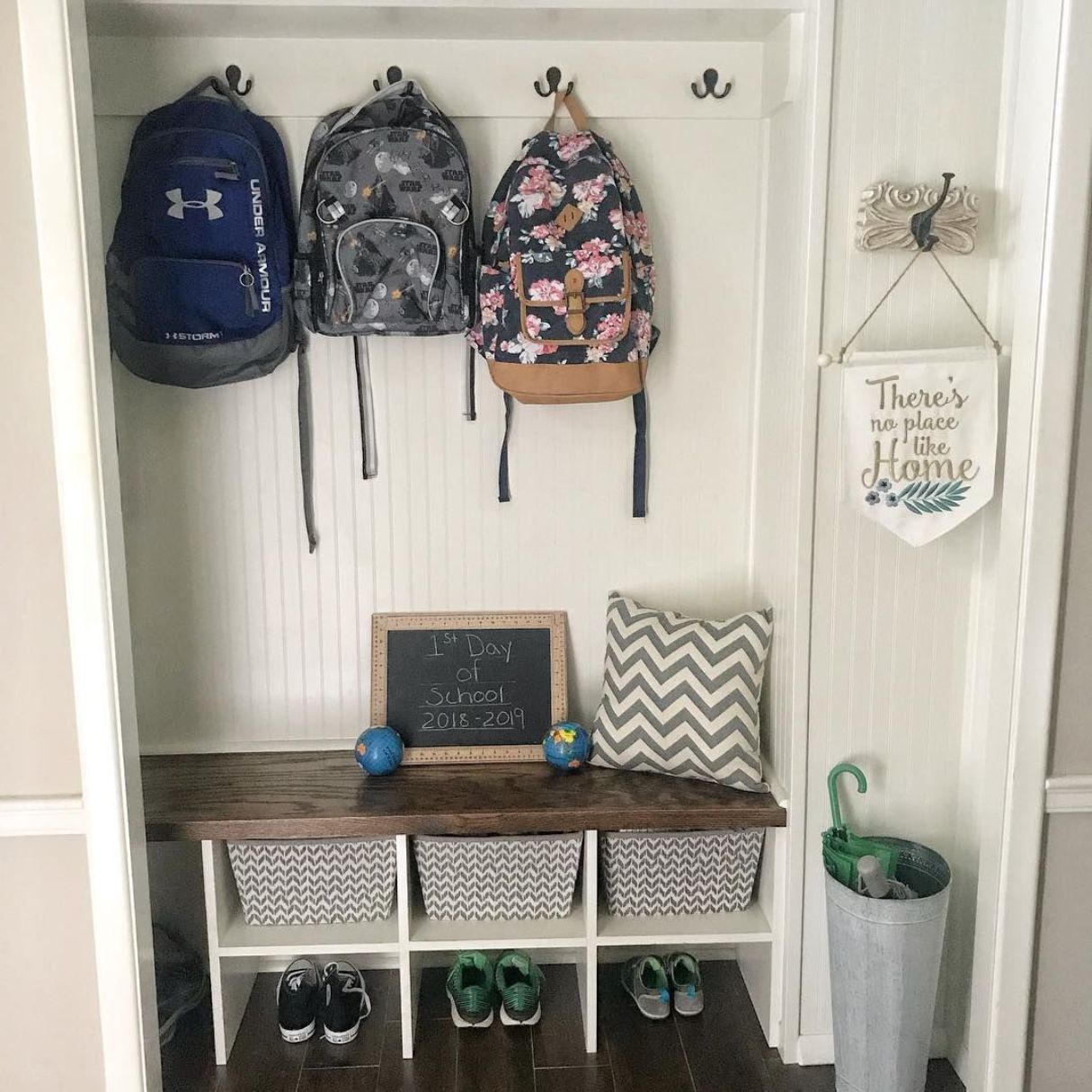
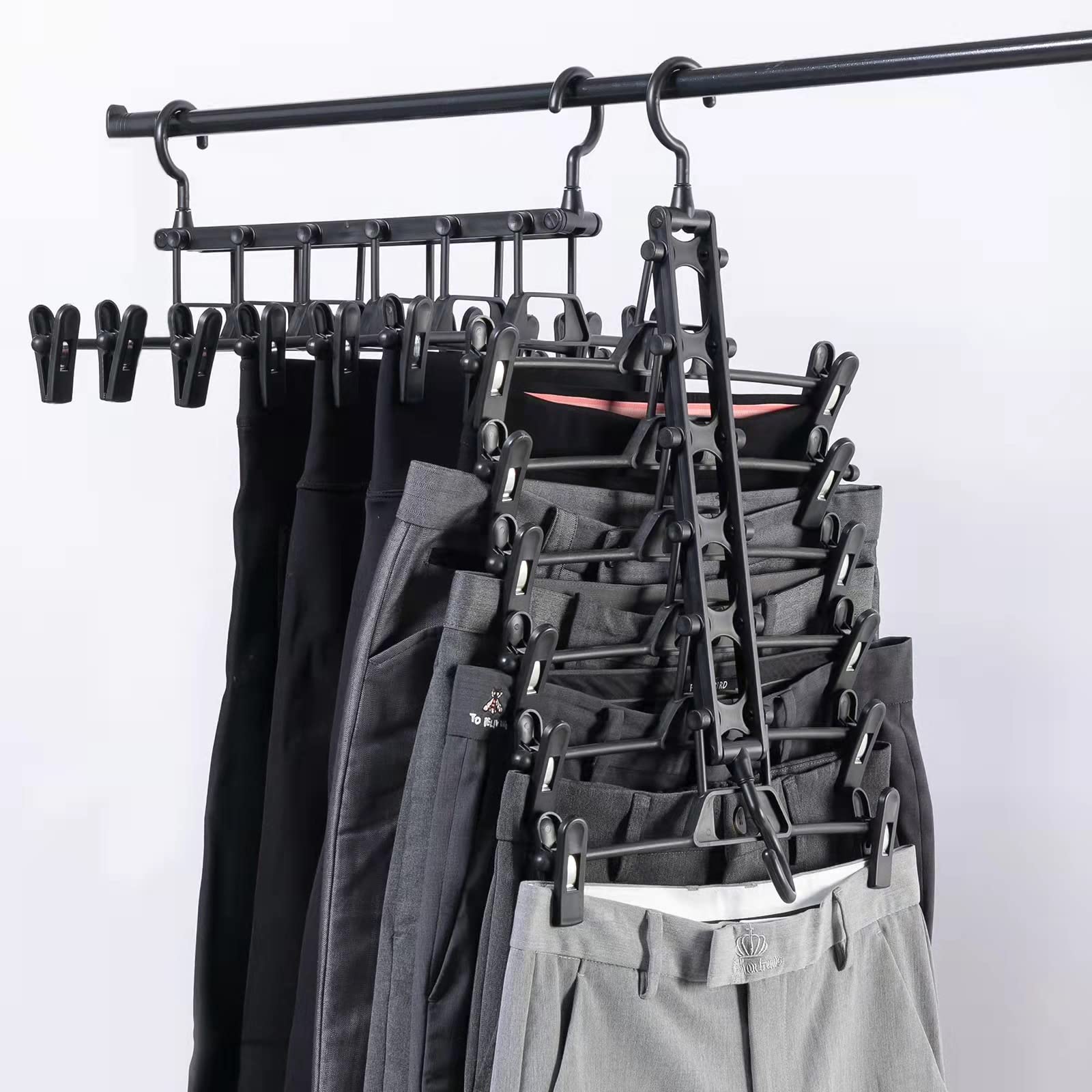
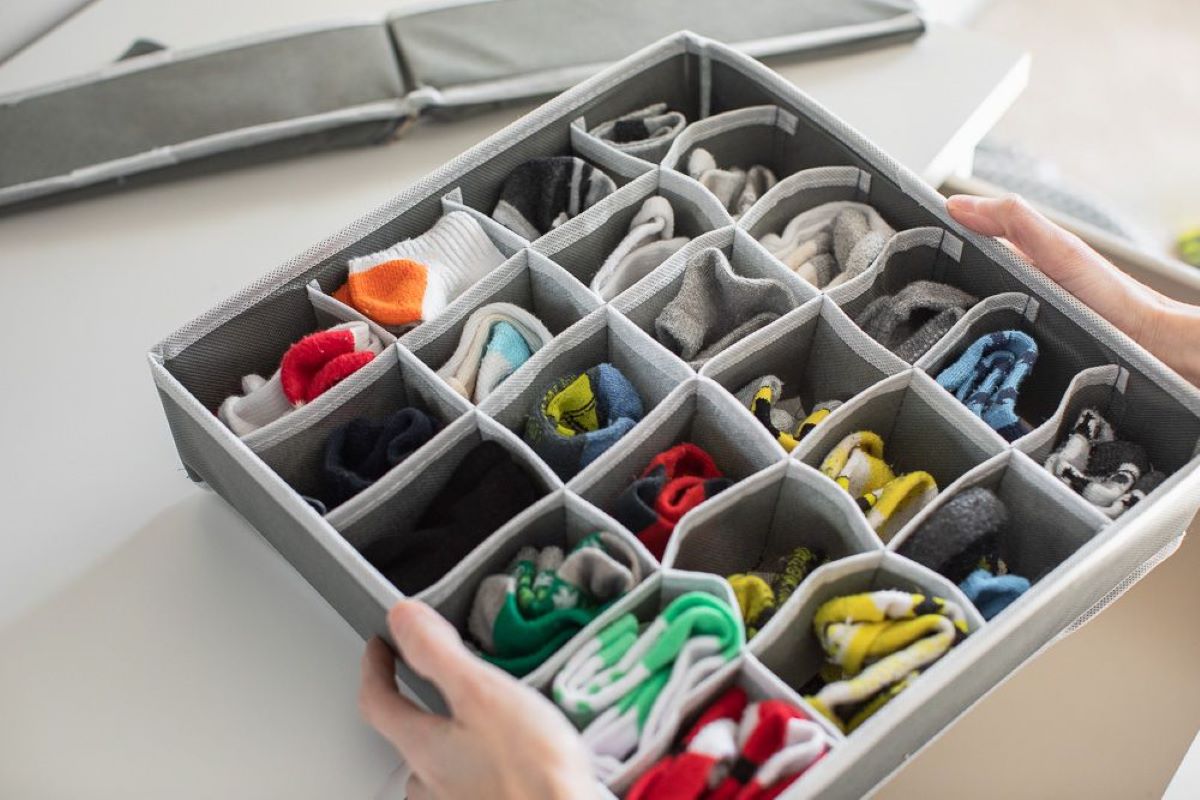
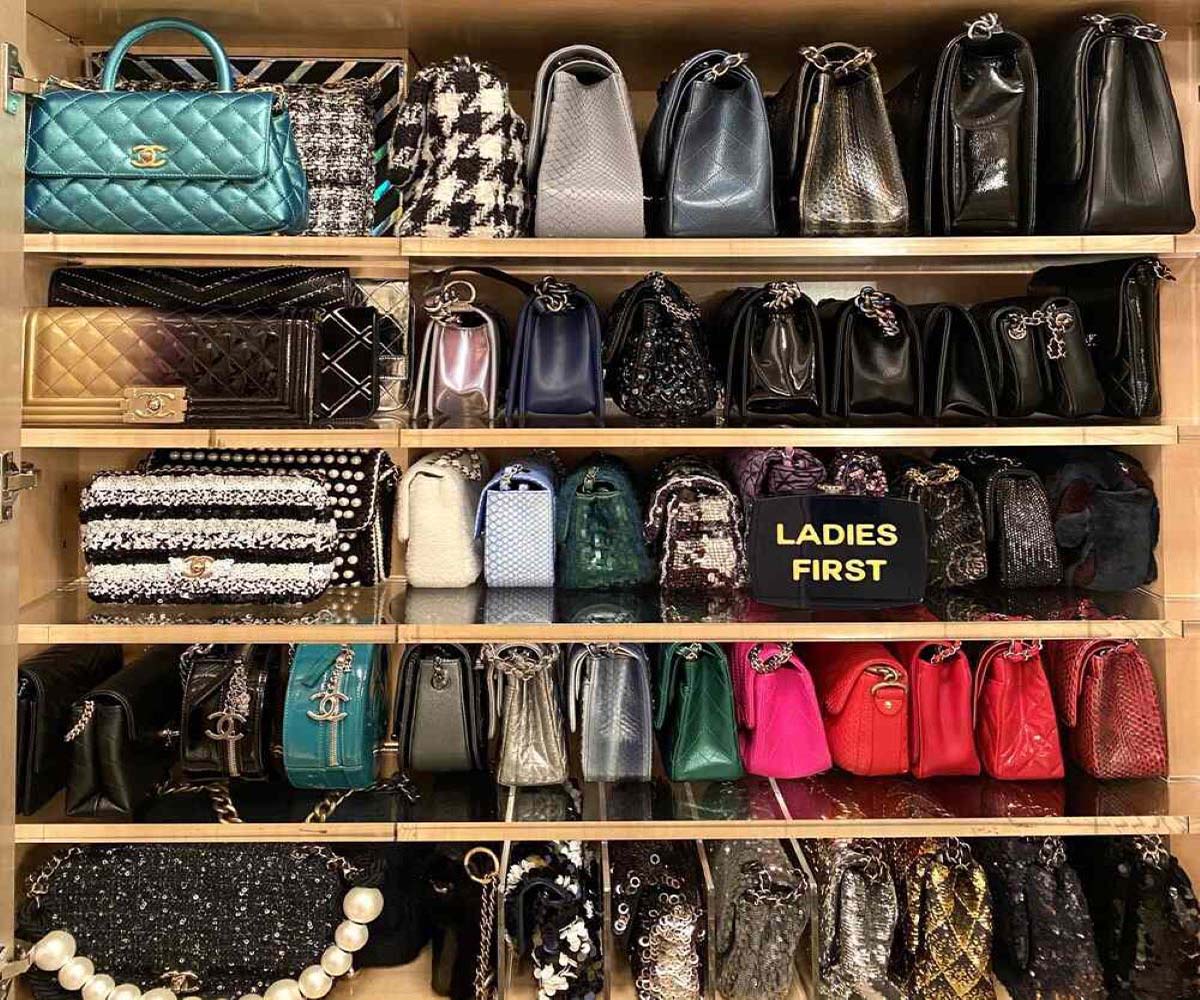

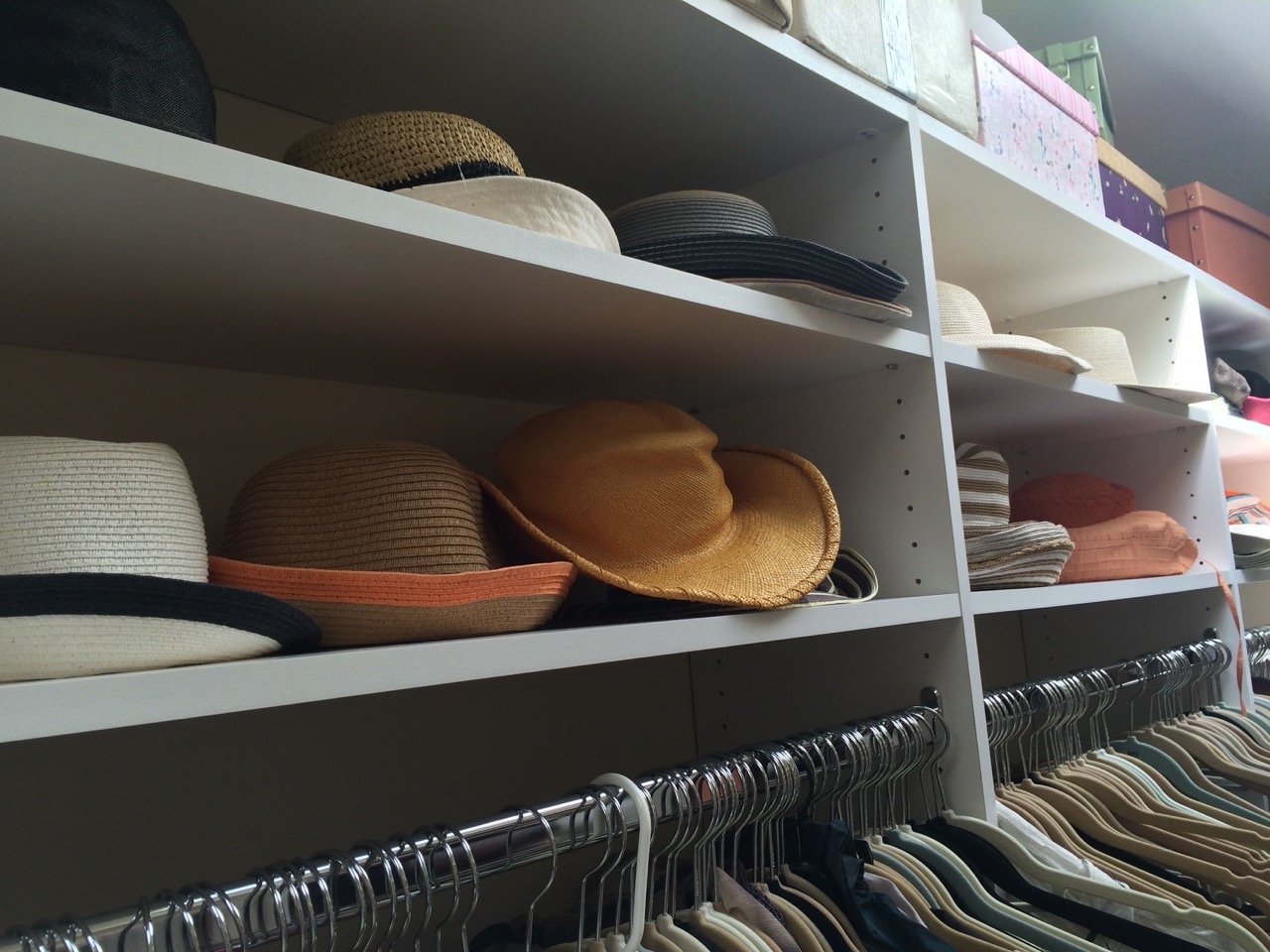
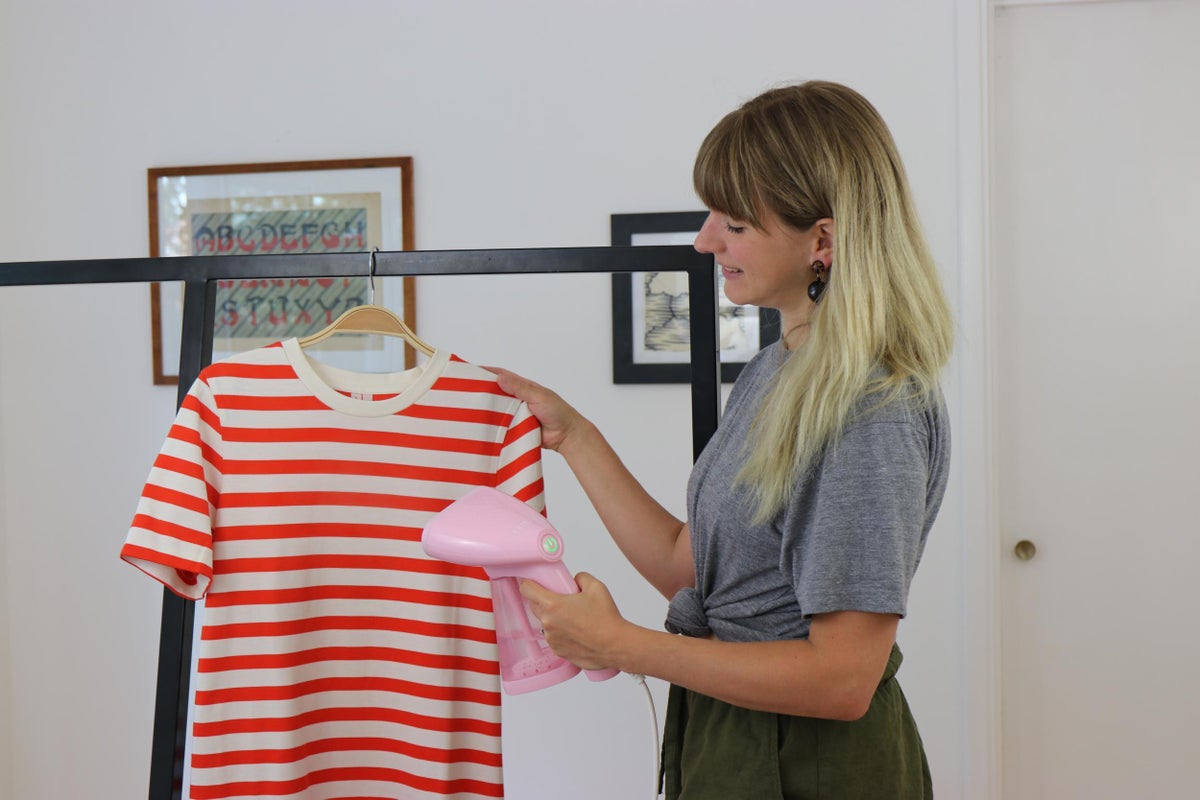
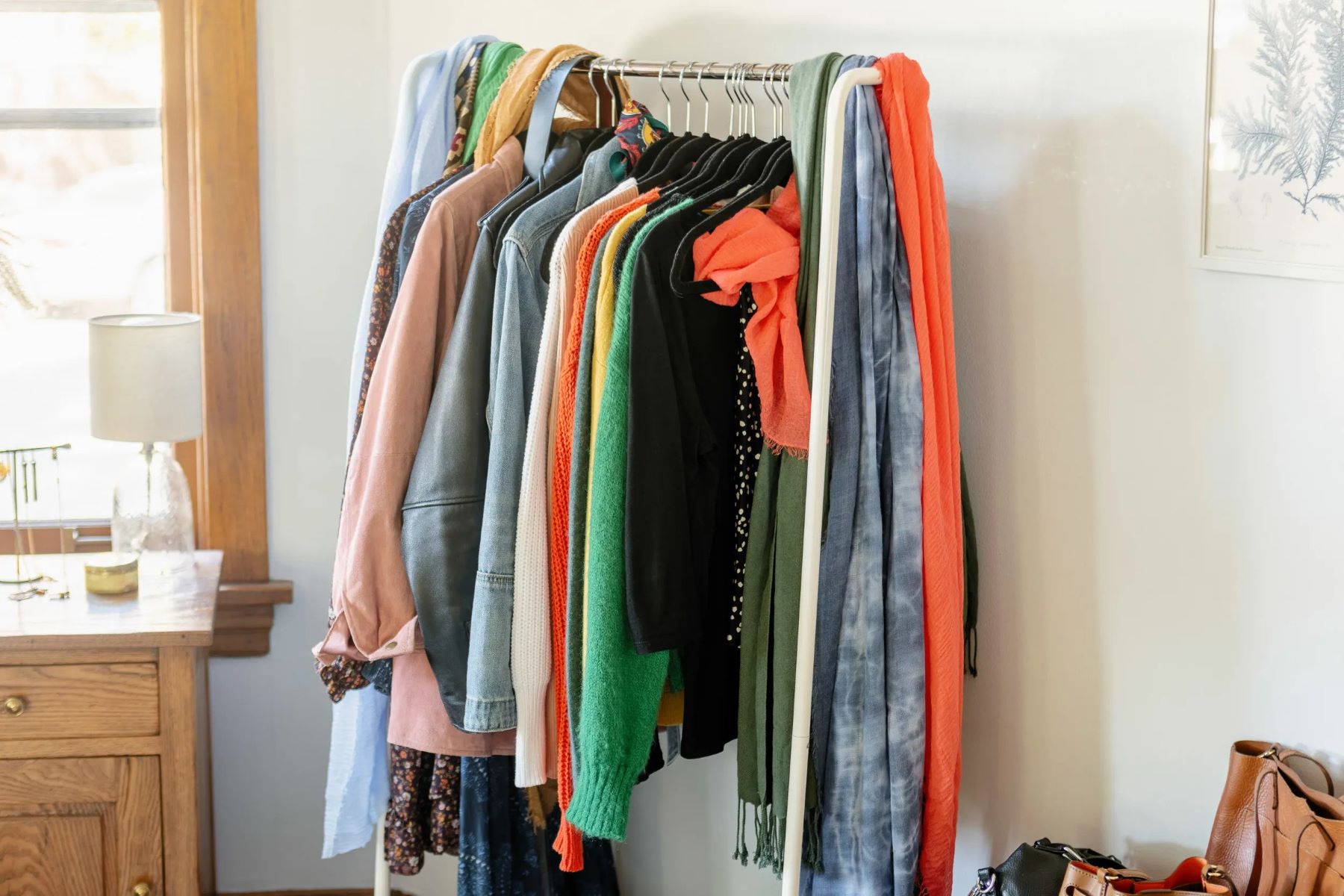

0 thoughts on “How To Store Shirts In Closet”